

E3A Small Wind: Economic Considerations and Incentives
Reviewed
Editor’s note
The following abstract describes a publication that is only available as a downloadable PDF.

Chief Officer, Fourth Edition Exam Prep
New $28
This Exam Prep is designed to be used as a self-study tool for students to prepare for comprehensive end of course tests and the written portion of a certification exam. It contains more than 500 multiple choice questions based on the Chief Officer, Fourth Edition Manual.
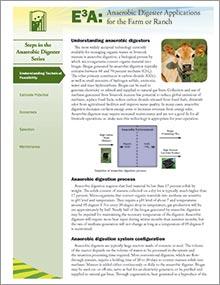
E3A Anaerobic Digesters: Understanding Technical Feasibility
Reviewed
Editor’s note
The following abstract describes a publication that is only available as a downloadable PDF.
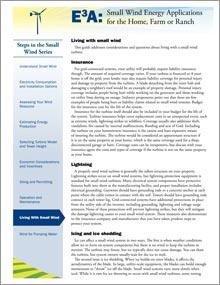
E3A Small Wind: Living With Small Wind
Reviewed
Editor’s note
The following abstract describes a publication that is only available as a downloadable PDF.
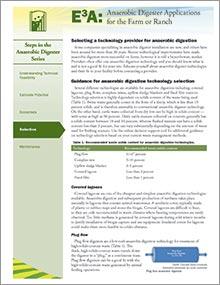
E3A Anaerobic Digesters: Selection
Reviewed
Editor’s note
The following abstract describes a publication that is only available as a downloadable PDF.
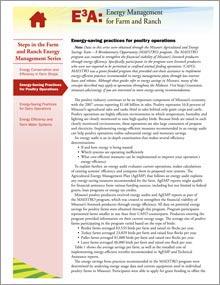
E3A Farm Energy: Energy-Saving Practices for Poultry Operations
Reviewed
Editor’s note
The following abstract describes a publication that is only available as a downloadable PDF.

E3A Solar Hot Water: Building and Site Assessment
Reviewed
Editor’s note
The following abstract describes a publication that is only available as a downloadable PDF.

E3A Solar Electricity: Introduction
Reviewed
Discover photovoltaic technology. Dispel some myths about the cost of a photovoltaic system. Learn about energy payback, PV technology and solar cells.
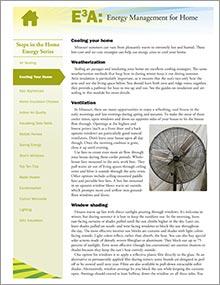
E3A Home Energy: Cooling Your Home
Reviewed
Editor’s note
The following abstract describes a publication that is only available as a downloadable PDF.

E3A Solar Hot Water: System Sizing
Reviewed
Editor’s note
The following abstract describes a publication that is only available as a downloadable PDF.

E3A Solar Electricity: System Options
Reviewed
Learn about the four most common solar electric system options: grid-connected systems with or without batteries, off-grid systems and PV-direct systems.
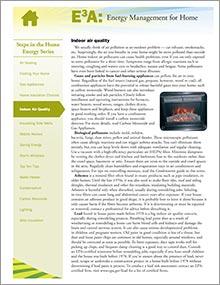
E3A Home Energy: Indoor Air Quality
Reviewed
Editor’s note
The following abstract describes a publication that is only available as a downloadable PDF.
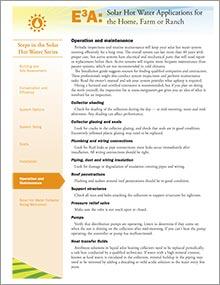
E3A Solar Hot Water: Operation and Maintenance
Reviewed
Editor’s note
The following abstract describes a publication that is only available as a downloadable PDF.

E3A Solar Electricity: Costs
Reviewed
Learn about the costs of a solar electric system, how to estimate cost savings and simple payback for a net-metered photovoltaic (PV) system, and more.

E3A Home Energy: Mobile Homes
Reviewed
Editor’s note
The following abstract describes a publication that is only available as a downloadable PDF.
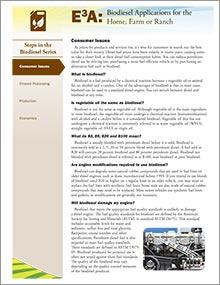
E3A Biodiesel: Consumer Issues
Reviewed
Editor’s note
The following abstract describes a publication that is only available as a downloadable PDF.

E3A Solar Electricity: Electricity Use Worksheet
Reviewed
Use this electricity-use worksheet to estimate your energy use and help you determine what size solar electric system would meet your energy needs.

E3A Home Energy: Water Heater
Reviewed
Editor’s note
The following abstract describes a publication that is only available as a downloadable PDF.
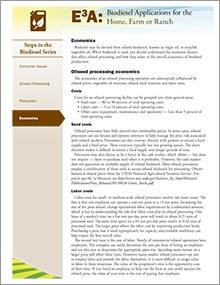
E3A Biodiesel: Economics
Reviewed
Editor’s note
The following abstract describes a publication that is only available as a downloadable PDF.
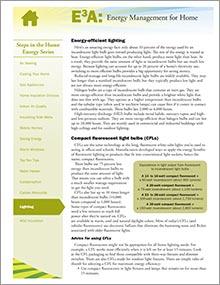
E3A Home Energy: Energy-Efficient Lighting
Reviewed
Editor’s note
The following abstract describes a publication that is only available as a downloadable PDF.
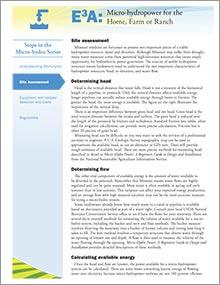
E3A Micro-hydro: Site Assessment
Reviewed
Missourians are fortunate to possess two important pieces of a viable hydropower resource: water and elevation. Learn about these two important characteristics of hydropower in this guide.

Fire and Emergency Services Company Officer, Sixth Edition Manual
New $67 to $79
This manual provides emergency services personnel with skills needed to reach the performance requirements of NFPA 1021. The text is written for Level I and Level II fire officers and fire officer candidates. Its goal is to provide candidates and current company officers with the knowledge needed to develop safe, efficient and effective leadership skills.
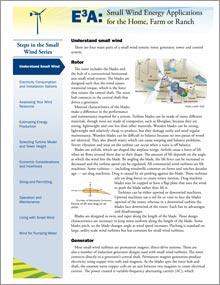
E3A Small Wind: Understand Small Wind
Reviewed
Editor’s note
The following abstract describes a publication that is only available as a downloadable PDF.

E3A Understanding Energy: Net Metering Electrical Energy Generators
Reviewed
Editor’s note
The following abstract describes a publication that is only available as a downloadable PDF.
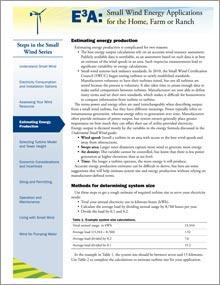
E3A Small Wind: Estimating Energy Production
Reviewed
Editor’s note
The following abstract describes a publication that is only available as a downloadable PDF.